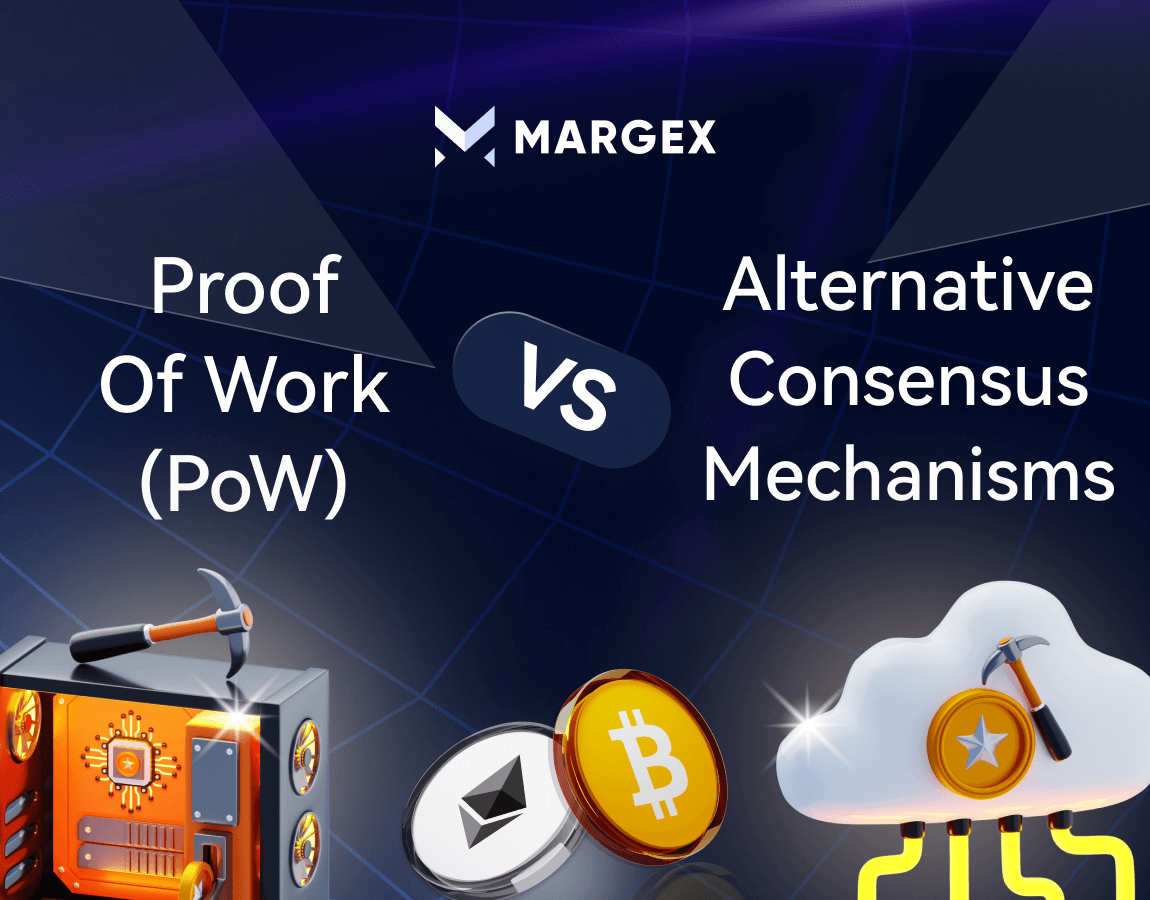
Proof of Work (PoW) is a pillar that ensures the security and dependability of Bitcoin’s distributed ledger at its fundamental level. The first kind of this consensus mechanism became firmly ingrained in the network with the arrival of hashcash in 1993. Moni Naor and Cynthia Dwork introduced the invention, using Hashcash to reduce spam and combat denial of service (DoS) attacks.
To encourage legitimate activities, they provided a solution that needed users to make the tune of performing computational tasks and use the computer’s time to request services and deter malicious activities.
PoW is the foundation of the network’s security and integrity, so Bitcoin cannot exist without it. Still, understanding how it operates is just as crucial to network players and Bitcoin owners as anything.
Examining PoW begs important questions: Why does it use so much energy?
How can it safeguard transactions? Among other systems, such as Proof of Stake (PoS), how unique it is? PoW will be discussed in this paper, including its advantages and disadvantages and its indispensible part in the Bitcoin ecosystem.
The Mechanics of Proof of Work
PoW ensures the decentralized operation of Bitcoin’s network by removing a central authority and secures transaction validation at the core of the Bitcoin network. Satoshi Nakamoto’s 2008 white paper outlined how Bitcoin’s functionality is based on the PoW.
Transaction Validation
A Bitcoin transaction is bundled with other transactions into a ‘block’ when the transaction takes place. The solution to a cryptographic puzzle associated with this block is what mines compete to solve using their computational resources. Once the puzzle is solved, the miner obfuscates in the transaction ‘wages’ a set amount of the blockchain’s native currency to do so and then adds the block to the blockchain, guaranteeing the transaction’s authenticity.
The Mining Process
In mining, a lot of hardware power is used to perform calculations to find a single hash value. However, this process is computationally intensive and requires a lot of energy and complementary power to achieve the desired result.
Security Assurance
An important factor in making malicious actors unattractive is the computational difficulty of PoW puzzles. It’s almost impossible to tamper with a block in the chain because doing so would require redoing PoW from that block and subsequent ones.
Proof of Work’s Role in Bitcoin Security
Bitcoin can only exist with security and unlocking, which requires a decentralized network of miners and cryptographic puzzles.
Cryptographic Puzzles & Miners
Likewise, a person serving as a miner creates a complicated cryptographic challenge to validate transactions for others. The computational density of these puzzles means that no individual or collective can easily run amok and take over the process.
Adding New Blocks to a Blockchain
A miner solves a puzzle once to receive the right to add a block of transactions to the blockchain. The updated ledger is then broadcast to the network, where all the participants remain in harmony.
Blockchains are Not Manipulated
In PoW’s structure, altering past transactions is nearly impossible. To mess with a single transaction, an attacker must redo the PoW for the affected block and all blocks after that. Such attempts are far too costly and likely infeasible.
This detail of PoW emphasizes its crucial part in Bitcoin’s success. Although computing intensity and energy consumption are issues, PoW is still a fundamental component of the Bitcoin network since it offers unmatched security and decentralization.
Exploring Proof of Work: Advantages, Challenges, and Solutions
The Role of Distributed Mining
A pillar of distributed mining, proof of work (PoW) ensures the broad presence of the mining operation over several locations. With this method, no one party can control the blockchain—a vital component of Bitcoin’s security and renders the currency so dependable and trustworthy.
Key Benefits of Proof of Work
- Mitigation of Double-Spending
One of PoW’s great advantages is that it is heavily armed against double-spending. PoW is essential in verifying legitimate transactions by providing the burden of computation management to miners, who must solve tricky mathematical puzzles before a transaction can be spent outside the network.
- Super Defense Against Attacks
PoW makes the security against the 51% attack formidable (though certainly imperfect). It would take an attacker a completely insane amount of financial and computational resources to control most of the network’s mining power in the first place, so this is completely impractical. This protects the blockchain and reinforces its resilience.
- Decentralization of Control
The decentralized structure PoW supports can be supported because any individual with enough computational resources can participate in the mining process. It catches with this inclusivity so that May’s central authority can dominate the network, leading to trustlessness and transparency throughout the blockchain.
Proof of Work Challenges
- Scalability Limitations
Bitcoin’s network can only move about 7 transactions a second,d partly because P.o.W. takes so long to generate blocks (about 10 minutes). This design choice can lead to delays at peak times, longer confirmation times, and larger fees.
- Risks of Centralization
PoW seeks to distribute, yet pools of miners have also surfaced and provide centralizing hazards. Should these pools manage sufficient of the hash rate of the network, they could jeopardize the security and decentralization of the Blockchain, therefore enabling coordinated attacks.
Addressing the Challenges
Efforts to mitigate PoW’s challenges have led to innovative solutions aimed at improving the Bitcoin network’s scalability and decentralization:
Layer-2 Solutions: As scalability becomes more critical, more Bitcoin DeFi projects use Layer-2 (L2) technology to solve that problem. Leaving these off-chain transactions allows for reducing the primary blockchain transaction load, thereby alleviating congestion and increasing efficiency.
Lightning Network: The L2 payment protocol allows users to pay L2 and process transactions off-chain using their nodes individually. Through faster and cheaper transactions, the Lightning Network gives everyone tools while minimizing the risks in mining pool centralization.
For a new asset like Bitcoin with no known timeframe for maturing, these advancements represent that the nature of Bitcoin’s ecosystem is changing as it finds new ways to overcome the inherent limitations of Proof of Work while preserving its core principles of security and decentralization.
The Environmental Impact of Proof of Work (PoW) and Comparative Consensus Mechanisms
Energy Usage and Environmental Challenges of PoW
The Proof of Work (PoW) has faced criticisms for its high electricity use and environmental impacts. How is this high energy demand driven?
Computational and Hardware Demands
Solving PoW puzzles requires computational power because it consumes considerable energy. Unlike banks, miners are used by miners that utilize hardware such as Application-Specific Integrated Circuits (ASICs), which are specialized to solve complicated algorithms efficiently. However, more participants join the mining process, which means competition drives up the total energy consumed.
Carbon Emissions and Electronic Waste
Significant carbon emissions result from Bitcoin mining, and those numbers rise by a factor of 10 if, as some economists suggest, Bitcoin consumes as much energy as some countries. An estimate of Bitcoin’s energy usage in 2021 estimated that it was equal to the energy usage of countries like Argentina. Furthermore, the mining equipment is very fast, and it is obsolescent, which leads to a lot of electronic garbage, making the environment even worse.
Steps Toward Sustainability
Mining operations, too, are adopting renewable energy to reduce their carbon impact. Proof of Stake (PoS) is Ethereum’s attempt to move away from Proof of Work (PoW), a more energy-hungry consensus mechanism. It shows more effort from the blockchain industry in raising awareness for sustainability and keeping the environment in check.
Comparing PoW to Alternative Consensus mechanisms
What are its similarities and differences to other consensus mechanisms, such as Proof of Stake (PoS) and Delegated Proof of Stake (DPoS)? Each offers different advantages and tradeoffs.
Proof of Work (PoW)
Advantages:
Security: Since PoW requires a substantial amount of resources and computational power is scarce, altering the blockchain is very resource-intensive for malicious actors.
Decentralization: PoW enables a decentralized network where anyone with the needed hardware can participate.
Disadvantages:
Energy Consumption: PoW has high energy demands that give environmental concerns.
Scalability Challenges: It restricts transaction processing speed and scalability from times and resources used.
Proof of Stake (PoS)
This way, PoS validators select based on the number of tokens they own and have staked, which helps reduce energy requirements while protecting the network from insecurity.
Delegated Proof of Stake (DPoS)
DPos also uses a voting system that employs validators to elect and is faster than PoW sending to reduce energy consumption. Based on these consensus mechanisms, stakeholders can assess trade-offs between security, efficiency, and environmental sustainability in blockchain technology.
Prominent Cryptocurrencies Using Proof-of-Work (PoW) Mechanisms
More than 60% of the market capitalization in cryptocurrencies is PoW based. Among these, a few particularly noteworthy networks have set themselves apart by using this consensus model:
Bitcoin:
Bitcoin’s success as the world’s most secure, decentralized PoW system is largely thanks to its innovative design by creator Satoshi Nakamoto. The key properties of Bitcoin’s PoW framework go beyond guaranteeing robust security; its economic model is also sustainable.
Litecoin:
Litecoin was launched as a fork in 2011. It is a replica of Bitcoin but with some PoW adapted from its original network. Litecoin is the “silver to Bitcoin’s gold,” a powerful cryptocurrency in market capitalization.
Dogecoin:
Dogecoin, a meme-based cryptocurrency introduced in 2013, uses a PoW algorithm based on Litecoin. Dogecoin and Litecoin can perform faster transactions than Bitcoin, but they are less secure because of their different network architectures.
Monero:
One PoW-based privacy coin is monero. The anonymity of the transaction integrates features such stealth addresses and ring signatures. Monero’s PoW system is intended to defend against ASICs and promote individual miners instead than big-scale mining activities.
Bitcoin Cash:
Designed from a hard fork from Bitcoin in 2017, Bitcoin Cash is a PoW network. It increases the block size limit to 32 MB in an effort to solve the scalability issues with Bitcoin, therefore facilitating speedier transactions. However, there are concerns about centralization as only a few mining pools dominate its network.
Comparing Proof of Stake and Delegated Proof of Stake Mechanisms
Advantages of Proof of Stake (PoS)
Energy Efficiency: The poS technique significantly reduces environmental impact compared to energy-intensive computations.
Scalability: Quicker transaction processing enhances network performance by faster block validation.
Proof of Stake challenges
Centralization Risks: Where there are bigger stakes, you can have a larger influence, which also is a concern of potential centralization.
Security Vulnerabilities: The “nothing at stake” problem, where validators have nothing to lose from supporting multiple forks during a network split, can still be a problem with PoS.
Delegated Proof of Stake (DPoS) Advantages
High Throughput: A DPOS can process many transactions per second, which is great for high-demand applications.
Enhanced Governance: The democratic aspect of network management is integrated through stakeholders voting for delegates.
Delegated Proof of Stake (DPoS) Challenges
Centralization Concerns: Control among a few delegated can eventually restrain the network decentralization.
Trust Issues: Those delegates who engage in dishonesty or collusion do so on the promise of stakeholder trust.
Implications for Bitcoin Investors and the Broader Blockchain Ecosystem
For years, the Bitcoin mining industry has been challenging the widespread belief that Proof-of-Work (PoW) systems are inherently harmful to the environment as more mining operations come to leverage renewable energy sources.
This shift also suggests that the environmental cost of Bitcoin mining is closer to neutral than many might have expected. Some proponents say that Bitcoin could eventually help the planet.
The Bitcoin network’s security is anchored to a tangible resource like energy and, somewhat, to the Bitcoin price and other market prices, making the system more resilient,particularly at optimal hash rates.
Investing through mining-focused stocks such as Riot Blockchain, Hive, Marathon Digital, and Hut8 allows investors to gain exposure to Bitcoin without direct involvement. In the last few years, there have been more and faster consensus mechanisms; however, these newer networks still need to work on centralization.
PoW, the proven and reliable framework for the security of public blockchains, will likely continue to be used as the blockchain industry moves toward mainstream adoption. The introduction of consensus models other than PoW demonstrates that PoW is not rendered obsolete by itself; rather, the combination of its unique strengths makes it an appealing solution to investors concerned about security and censor resistance.
Future of Proof-of-Work in Blockchain Technology
Proof of Work (PoW) was the first blockchain technology innovation. PoW achieves this by establishing an environment in which miner revenue will be earned through the validation of new blocks rather than forcing miners to operate on behalf of others in a horse race where the first to solve a puzzle gets the reward. It offers outstanding security by exchanging computing power for a genuine guarantee of blockchain ledger integrity with this pioneering consensus mechanism.
Difficulty adjustment, the key feature of the PoW algorithm, helps create a stable economic system by regulating the I.S. of new coins issued. This means the network supply is more evenly divided, so miners can’t amass tokens to gain excessive advantage or power over the network.
PoW remains the market share’s most dominant public blockchain consensus mechanism, holding the backbone for many of the world’s most prominent blockchains. It is so reliable and secure that it will probably continue as the method of choice to reach a consensus in decentralized networks.
Final Thoughts
One pillar of validation for the transactions on a blockchain is still proof of work (PoW). Its energy-intensive character and scalability problems are major obstacles that stop their application as a method to protect distributed systems and stop hostile attacks. Understanding consensus systems including PoW, PoS, and DPoS helps us to have insightful analysis of Blockchain technology’s developments and advancements.




